ISDN: The Untravelled Path of Mobile Computing
Remember the days before everyone had a mobile phone? Although it’s hard to imagine these days, but back before everyone had a mobile phone, public payphones and public phone booths were a massively important part of public infrastructure as a form of primitive mobile telephony for making phone calls. But what about data? Although the first battery-powered laptops came out in the 1983, digital mobile phones did not appear until 1992. In a lot of countries, there was no data equivalent of the public payphone and so you were stuck without connectivity until you could get back to your office or home. In Japan, however, things were different.
If you traveled to Japan in the 1980s, 90s, or 2000s, you would have seen a lot of phone booths around with a big ISDN sign lit up. For their time, these payphones looked positively futuristic. Here we can see one “in the wild”.
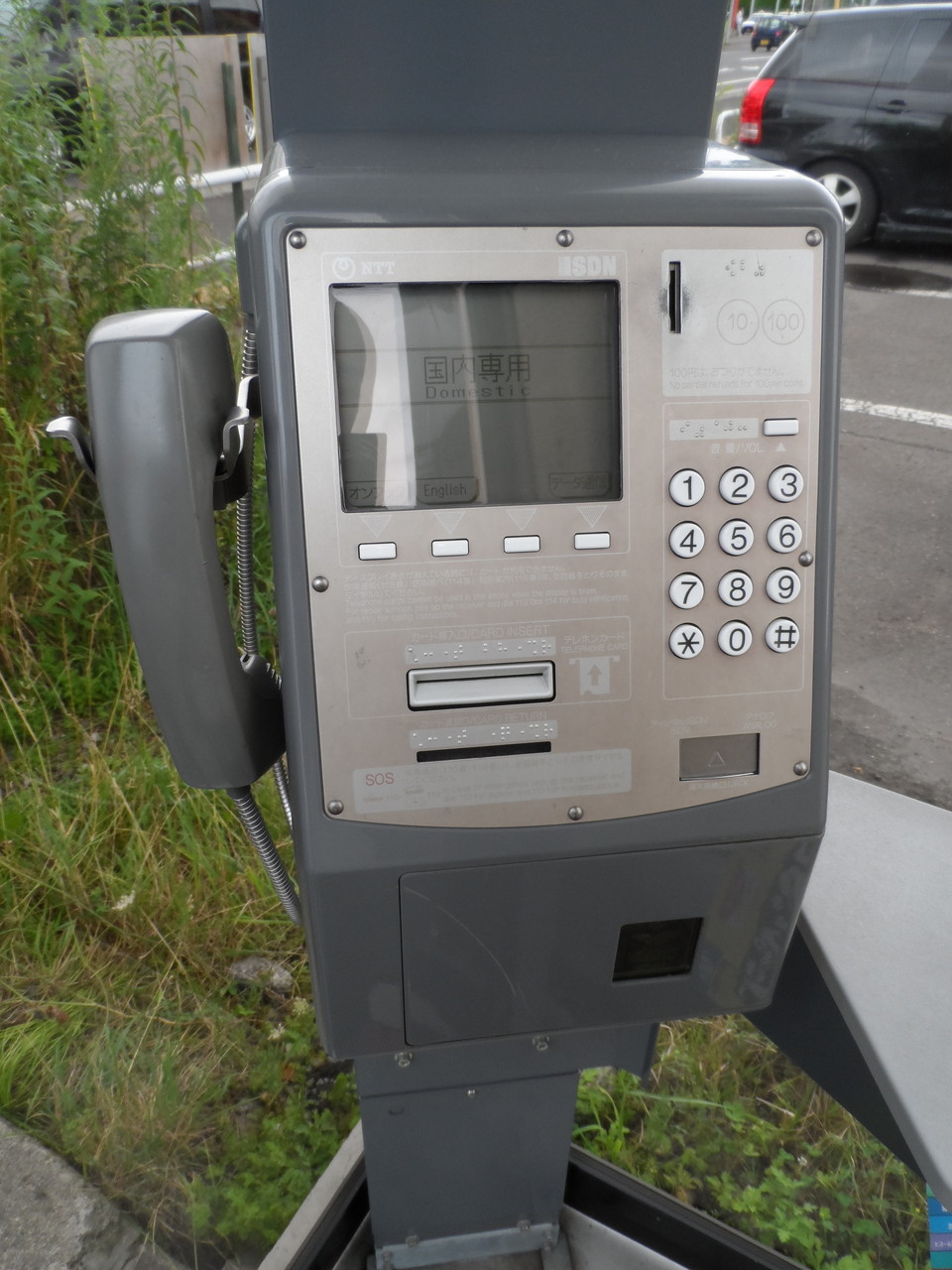
The interesting thing about these phones is the little flap on the lower right side of the face panel. Here it is again, closed and open:
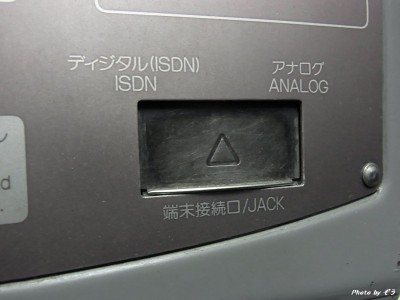
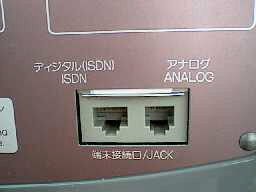
The reason for this is that Japan’s national phone carrier, NTT, had a vision for the future in which people who were out on the road with their mobile computing devices would stop off at a payphone and plug in to make “data” calls. ISDN was an international standard for a natively digital phone system, which offered 64 kbps line speeds. Here’s someone making a data call now:
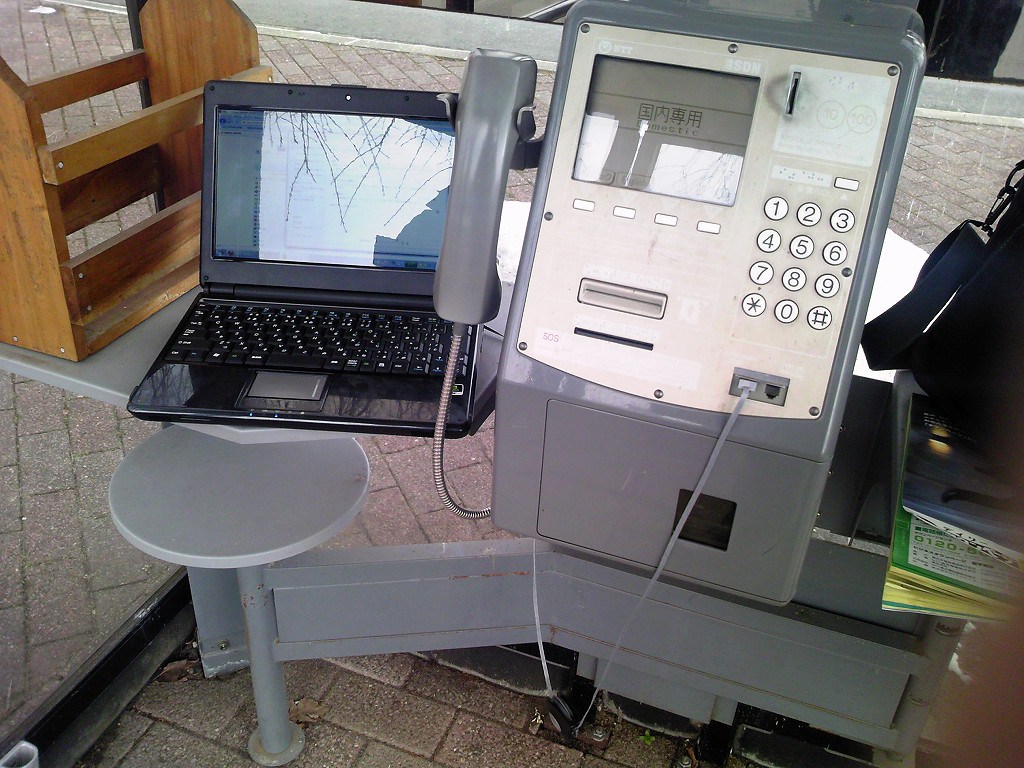
However, to make a data call, the person/device you were calling also had to support ISDN. So the ISDN payphones also supported plugging in a traditional analog modem, which at the time probably supported 9.6 kbps:
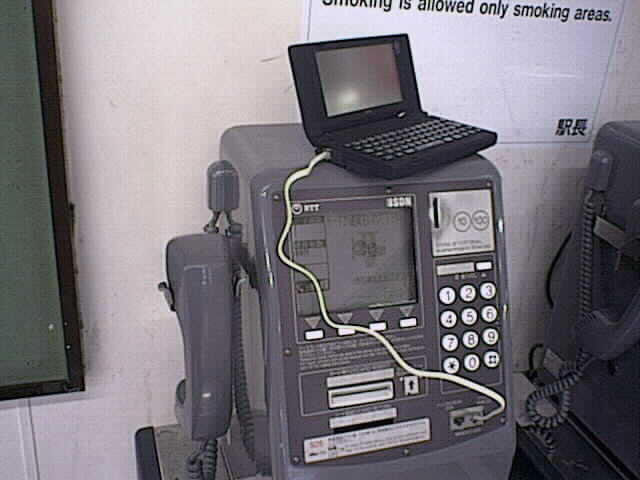
The Legacy of ISDN Phone Booths
Back before 1992, these ISDN phone booths were really the only form of mobile networking that was available. The Internet was still in its infancy (web browsing had not been invented yet), and very few companies were connected to it. If a company did have a network, it tended to be private network running a proprietary mail system only accessible via modem. If you were a traveling engineer or salesman, you realistically had no access to your home network from a client site unless they were willing to let you plug your modem in, something that was not possible with many PABX systems. This lack of mobile connectivity rendered the concept of laptop computers and PDAs (personal digital assistants) irrelevant to a large majority of potential users. In Japan, however, this access to public data ports created a larger market for these devices which the Japanese electronics manufacturers were able to capitalize on. This was just one of many factors that helped the Japanese electronics boom of the 1980s and 90s.
After digital mobile phones appeared in 1992, the ISDN phonebooths basically became dinosaurs overnight. However, they were backed by a huge public infrastructure in the form of a digital network spanning the country. This underlying ISDN infrastructure formed the backbone for a Japan-specific mobile technology called PHS, which I will get into in a later post. (Many European countries had also adopted ISDN, but not for their payphone networks, and so the PHS technology was really only feasible in Japan.) This was the beginning of the Galapagos effect in mobile technology – the phenomenon where Japanese mobile phone technology became completely disconnected from western technology through the 1990s and 2000s. Although public payphones in Japan still use ISDN, models sporting data call ports have all but disappeared from the streets of Japan.
Just to wrap up, I thought it is interesting that when you plugged a regular modem into an ISDN phone system, you essentially had a digital signal (the actual computer data) carried within an analog signal (the phone line coming out of the modem) carried within another digital signal (the digital ISDN line). Now, if you really wanted to get all Inception with your phone calls, you could run an IP telephony app like Skype on this computer and make 4 layer-deep a/d/a/d voice calls. And if you were making that voice call to an old school answering machine where you used an audio beeper to send commands to the answering machine, you could get another layer on top to get a nested d/a/d/a/d communication channel. These days, we can just skip it all and go direct to digital.
Related Posts
- A brief history of encodings from telegraph to ASCII with links to details of the mechanical encoders and decoders
- Japanese typewriters – How you can use a mechanical device to print thousands of different characters
- Why Japan didn’t create the iPod – How differences in language created a technological gulf between Japan and the West
- Details of an 1873 parent for synchronous multiplexing of Morse Code which demonstrates why binary codes are needed
- Details of a patent by Thomas Edison from 1876 which uses tuning forks to multiplex telegraphy signals
- Details of Baudot’s original patent from 1882 which uses electromechanical computing principles to decode 5-bit serial communication
Tweet
Norman Delaney said,
July 3, 2015 @ 12:25 pm
I remember these phones very well, having been a resident in Japan since 1990. However, I never realized they had that data connection feature. Maybe because I myself had no need for one on the road. Nowadays, most all of those phones are gone, and I still don’t have a mobile phone!!!
Durf said,
July 3, 2015 @ 2:49 pm
I used that feature every now and then when I had to send/receive email and I wasn’t at home. I believe the analog jack was a 56k modem, although it was so long ago it may have been running at the princely speed of 28k instead. Definitely not as slow as the 9.6k guess in your post, though.
Man, memories. On my PowerBook I had a little text file with a handful of dial-up phone numbers for gol.com in it.
Gatunka said,
July 3, 2015 @ 4:11 pm
Yeah, the analog speed depended on the modem in your computer. 9.6k was the fastest in 1992 when digital mobile phones first appear, 28k came out in 1994, while 56k wasn’t standardized until 1998.